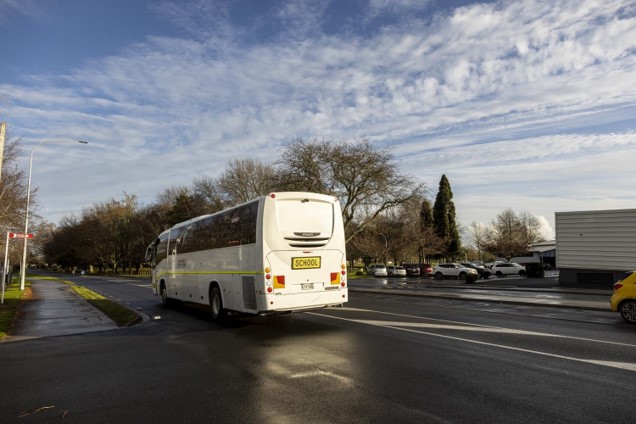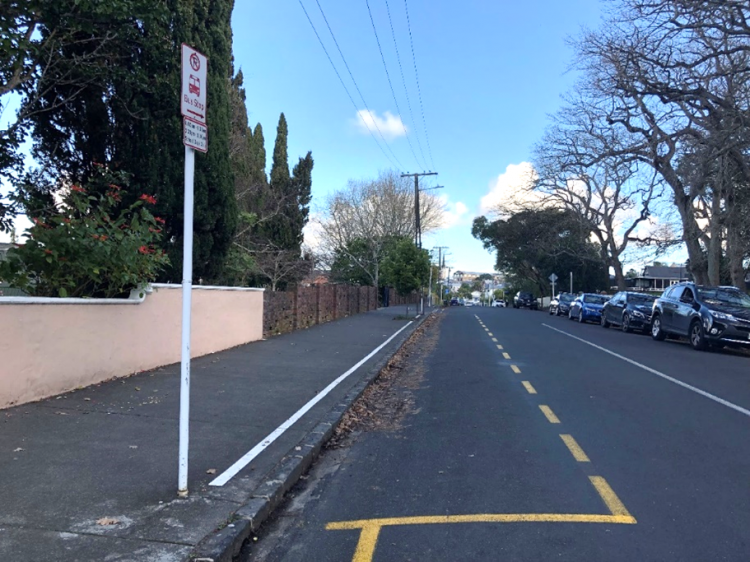
A school bus on the road.
On routes served by school buses only, lay out stops to facilitate safe and efficient access for the bus and students.
For rural school bus services, additional aspects must be considered given the often-higher speed environment.
The location of stops at or on the way to schools are influenced by:
The school may prefer bus stops to be within the school grounds. This has safety and convenience benefits as well as freeing up public road space, although a conflict between buses and concentrated groups of students may arise. This potential conflict can be managed, for example, with the school having buses arrive before the school-day ends and actively managing the footpath to facilitate the safe manoeuvre of buses around students crossing the road.
School bus stops and pick-up/drop-off areas for parents/caregivers may overlap, especially in rural areas, so parking provision and location is also a factor in facilitating a safe transfer between the two modes. It may be that the school bus stop is designed within or as part of a parking area or located near an existing parking lot. The walking path between the school bus stop and the parking area should be safe and accessible for pedestrians, particularly vulnerable pedestrians.
Strong demand can come from communities for shelter to protect children from inclement weather, despite the need being infrequent (once or twice per day). For cost-effectiveness, explore opportunities to combine school and public transport stops.
It is desirable to provide bus shelters for:
Peak waiting demand can often be very compressed, requiring potentially larger shelters than the total patronage might otherwise suggest, probably shelters of at least intermediate size. Wider footpaths are often needed at school bus stops to retain the through movement of other pedestrians and provide a safe waiting area for large groups of students.
For more information on bus stop shelters, see:
The provision of access to bus services on routes operated by only school buses should follow the same principles as on other routes. Different design standards may apply to the layout of school bus stops, as they are generally required only at certain periods on weekdays.
The primary design difference is to enable the space required by buses to approach, stop and depart safely and efficiently to be reserved for their use only at the appropriate time, thereby allowing other uses of the space at other times. This can be achieved by forming a single ‘bus box’ of a recommended minimum of 39m and making that single box effective only during school drop-off and pick-up periods (for example, from about 8:00–9:30am and 2:30–3:30pm) (see figure below). This approach avoids the unnecessary use of ‘no stopping’ markings that cannot be time limited. The 39m length allows a 30m parking length for two buses and 9m between the two buses so the rear bus can exit first if needed. This is consistent with the dimensions of a typical kerbside bus stop.
For more information, see:

Extended school bus stop, Auckland. (Source: Flow Transportation Specialists)
School bus services are provided using a wide variety of vehicle types (for example, minibuses, buses, and truck-based vehicles) as shown in the figure below.

Truck-based school bus, Gisborne. (Source: Mark Edwards)
For more guidance on siting school bus stops, see:
Guidelines for the Safe Siting of School Bus Stops [PDF, 789 KB]